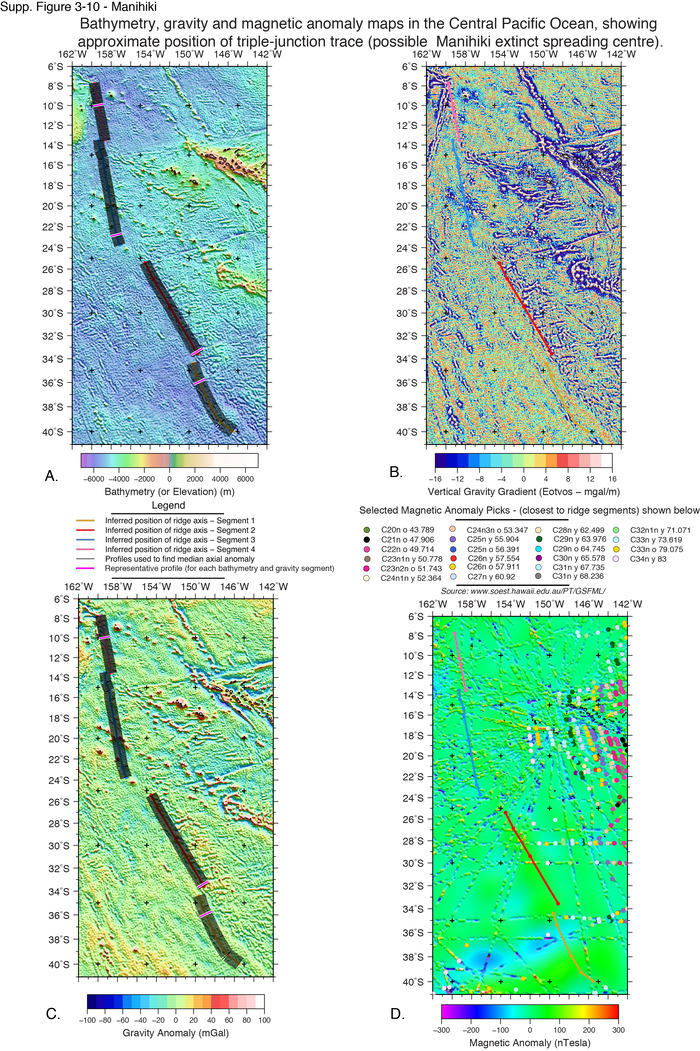| Ocean: | Pacific |
| Spreading center type: | Large-scale extinct mid-ocean ridge |
| Time of cessation: | Late Cretaceous Quiet Zone, possibly around 83 Ma (Muller et al., 2016) |
The Manihiki extinct spreading centre refers to the proposed Cretaceous spreading centre that is thought to have been placed between the Pacific and Farallon plates and is thought to have met a triple junction at it south and western boundary, with the Phoenix plate (Seton et al. 2012). The proposed plate boundary was probably oriented approximately north-south, with east-west spreading suggested by fracture zones in the region and it is likely that the ridge extended several thousand kilometres yet there is no clear evidence of an extinct axis structure in present-day preserved crust of the region. The Osbourn Trough and possible Tongareva spreading centre segments may have formed the third limb of the triple junction (as discussed in Supplementary Sections 3.03 and 3.06).
A major Cretaceous reorgnaisation of the Pacific plate boundary.
There are no formal identifications of the extinct spreading axis in published literature and there is no obvious 'ridge-like' structure that can be identified within the region. Due to the uncertainty in location of the former spreading center we do not include it in our statistical anaylsis.
Müller, R.D., Seton, M., Zahirovic, S., Williams, S.E., Matthews, K.J., Wright, N.M., Shephard, G.E., Maloney, K., Barnett-Moore, N., Hosseinpour, M. and Bower, D.J., 2016, Ocean Basin Evolution and Global-Scale Plate Reorganization Events Since Pangea Breakup, Annual Review of Earth and Planetary Sciences, v. 44, no. 1, p. 107-138.


